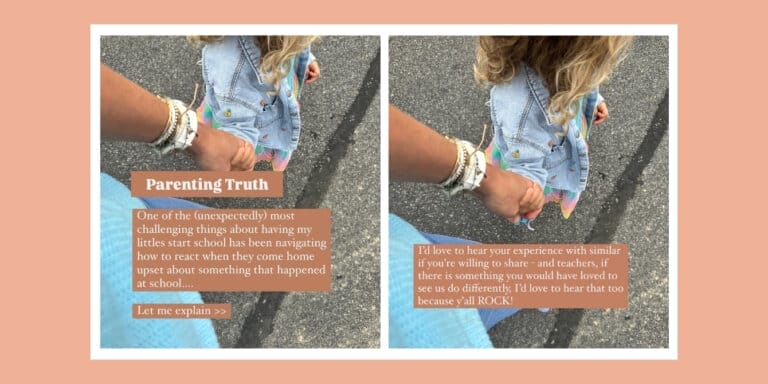If your kids are regressing, it’s normal

A pediatrician weighs in on why and what to do.
Table of Contents
Are you noticing that everyone seems to have taken two steps back? Your baby used to sleep through the night, your preschooler used to be potty trained, your grade-schooler used to be less sassy, you used to get along with your spouse…but enter COVID-19, and all that seems to have changed. At least for now.
What’s going on? Why do kids and adults regress during times of stress? Perhaps we are subconsciously asking to be cared for in a way. It’s like wanting to wrap up in a blanket, huddled in the fetal position.
Regression is common in children during the coronavirus pandemic—and in a way, to be expected. Here’s what to do about it.
Maturity requires increased inward “management” by the frontal cortex to ensure our behaviors comply with societal expectations and what we already know. During times of stress, all this goes out the window and we start acting more by instinct. This process can be physiologically explained in terms of blood flow changes in the brain during stress response system activation, but also, regressive behavior “works”—it serves an important purpose.
Even though regressive behaviors can be problematic—especially during a pandemic when our emotional resources as parents are already stretched thin—our subconscious has its own wisdom. Our kids whine or cry, our teenager throws a tantrum, our potty-trained child has an accident and we pay attention. This is partly what our kids are asking for right now.
But our kids don’t just need our attention. Your child’s inward emotions are asking for their attention, and need to be addressed.
So what do we do?
First of all, know this is temporary. And common.
Also, consider the following suggestions for how to respond when your child is showing regressive behavior during the pandemic—like moodiness, baby talk, potty accidents or sleep disruption:
Respond to emotions, not behavior.
Look for the message behind the emotion or the behavior and respond to that. For example, if your child has started wetting the bed again, sit down with them and say something like this: “I noticed you haven’t been dry the past couple nights even though it’s something you are really good at. It’s okay. Sometimes this happens when there’s extra stress hanging around, like there is with this pandemic. What are some things you’re worried about right now?”
Teach your kids (and keep in mind yourself) that emotions are messages. If we can acknowledge our feelings with kindness and non-judgment, we can get to the root of what’s needed and solve what needs to be solved.
Communicate with your kids.
Ask them what they know about coronavirus and what they want to know about it. Ask them what they’re specifically worried about. Share information and news in a developmentally appropriate way.
Support your child + take time to connect with them in a meaningful way.
According to a large study about toxic stress in childhood, the most powerful buffer that improved physical and emotional health outcomes for kids was the presence of a supportive, caring adult. Even though it may feel that options for outings are limited, sharing the time is more important than the specifics of the activity. While maintaining social distancing recommendations, take a walk, have a patio picnic, watch a movie together.
Allow yourself to have boundaries, too.
Just because your child is stressed, doesn’t mean you have to let them sleep in your bed every night if you don’t want to. Meet your children’s needs in ways that honor your own.
As parents we often find ourselves making accommodations based on our children’s needs—this is part of parenthood. But when those accommodations cross important personal lines (which are individual to each parent), the cost outweighs the benefit, and stress is added, rather than removed. Pay attention to your own inward responses. If an important boundary has been crossed you may need to be creative about seeking solutions that meet your child’s needs as well as your own—doing bedtime in a different way that encourages your child to sleep in their own room, for example.
Try yoga. Really.
Experts, such as psychiatrist Bessel van der Kolk, have taught us that we hold stress in our bodies, not just our minds. This is especially true for kids, who have a less sophisticated ability to communicate complex emotions through words. Yoga can transition us from one emotional state to another through physical movement. Certain poses evoke a sense of calm, like mountain pose or tree pose, while others evoke a sense of power, such as the warrior one and warrior two poses.
Learn & practice mindful self-compassion.
I teach my clients to use the reflective “NMLK” exercise. The acronym comes from a reflected segment of the alphabet. N is for “notice” the emotion, M is for “make room” for it, L is for “locate” the feeling in your body and “look deeper” to gain insight about it, and K is for respond with “kindness.” Dr. Tara Brach teaches a similar practice but uses the acronym “RAIN.”
Parents, keep up the great work. You have the hardest but most amazing job on the planet. This too shall pass!





































